With Weed Fabric, All Things Are Possible
I may have mentioned that one of my favorite things to do is bite off more than I can chew and then tend that group of items obsessively using highlighted lists and intricate schedules.
I didn’t make an ‘obsessive farmer statement’ for nothing.
But I do sometimes know when to say when and to take advantage of a simple, good thing when I see it.
Enter weed fabric.
This humble product allows me to keep the large lower garden from becoming a jungle (and to have time for fun stuff in the summer like rolling around in Lake Pend Oreille like an otter).
Weed fabric is that magical material made of woven plasticky black stuff that keeps the aisles of the garden clear so I can weed only the rows. It is made of recycled stuff and resembles the very durable feed sack material you already know and love.
You can buy it on a roll — but it isn’t cheap.
Which reminds me:
I like the two-foot-wide stuff with the finished selvedge and green lines running through, but beggars can’t be choosers so my collection of weed fabric is, shall we say, well-loved. Motley.
Most of it is ten years old, but this year I had to break down and retire a piece because, as Hank Williams says, “the air was showing through.”
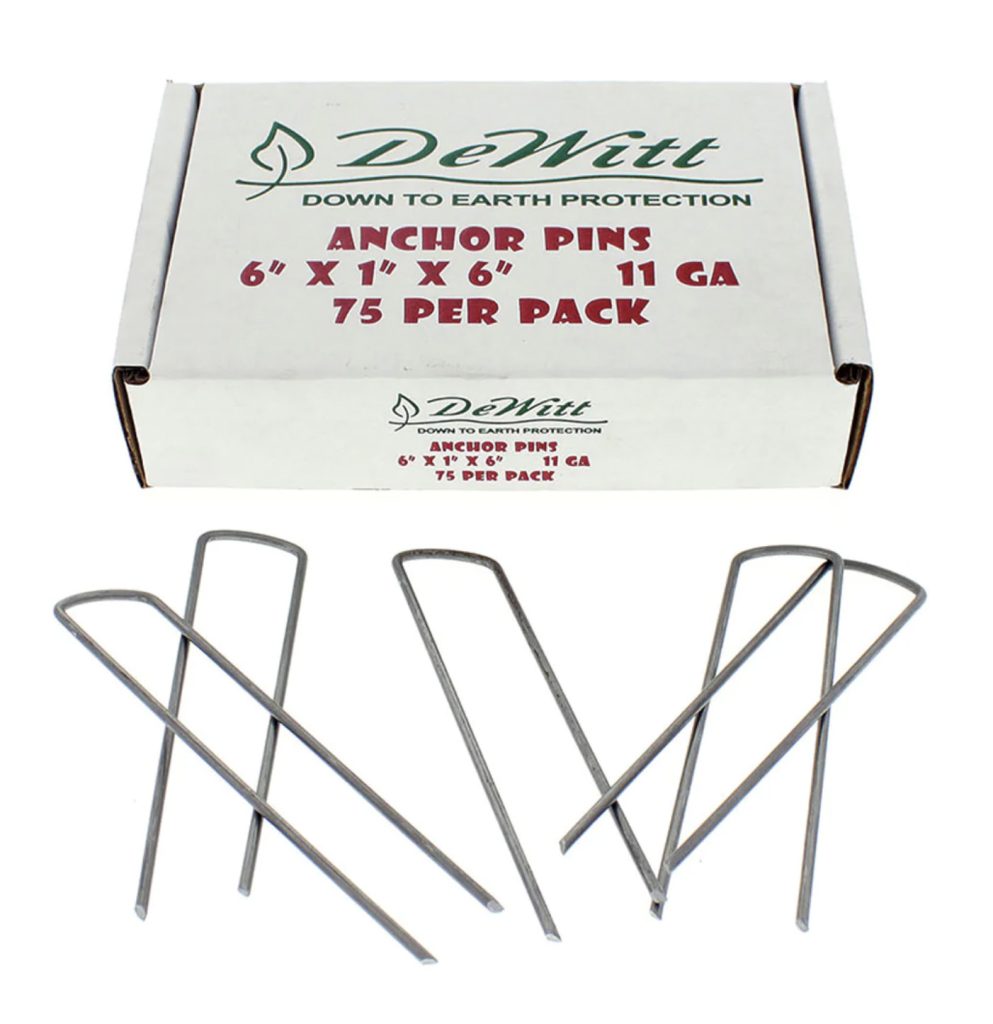
Every year I re-make the garden with weed fabric in spring, adding earth staples as sparingly as possible to tack it down from the wind.
And every fall, I take it back out, brush off the dirt, fold it up and store it until next year. This is my least favorite garden chore and I will do anything to avoid doing it in the cold rain, so I start early.
When it is time to take up the weed fabric, and I see it hanging around on my list for longer than it should, I feel exactly like I did as a kid when tasked with weeding strawberries.
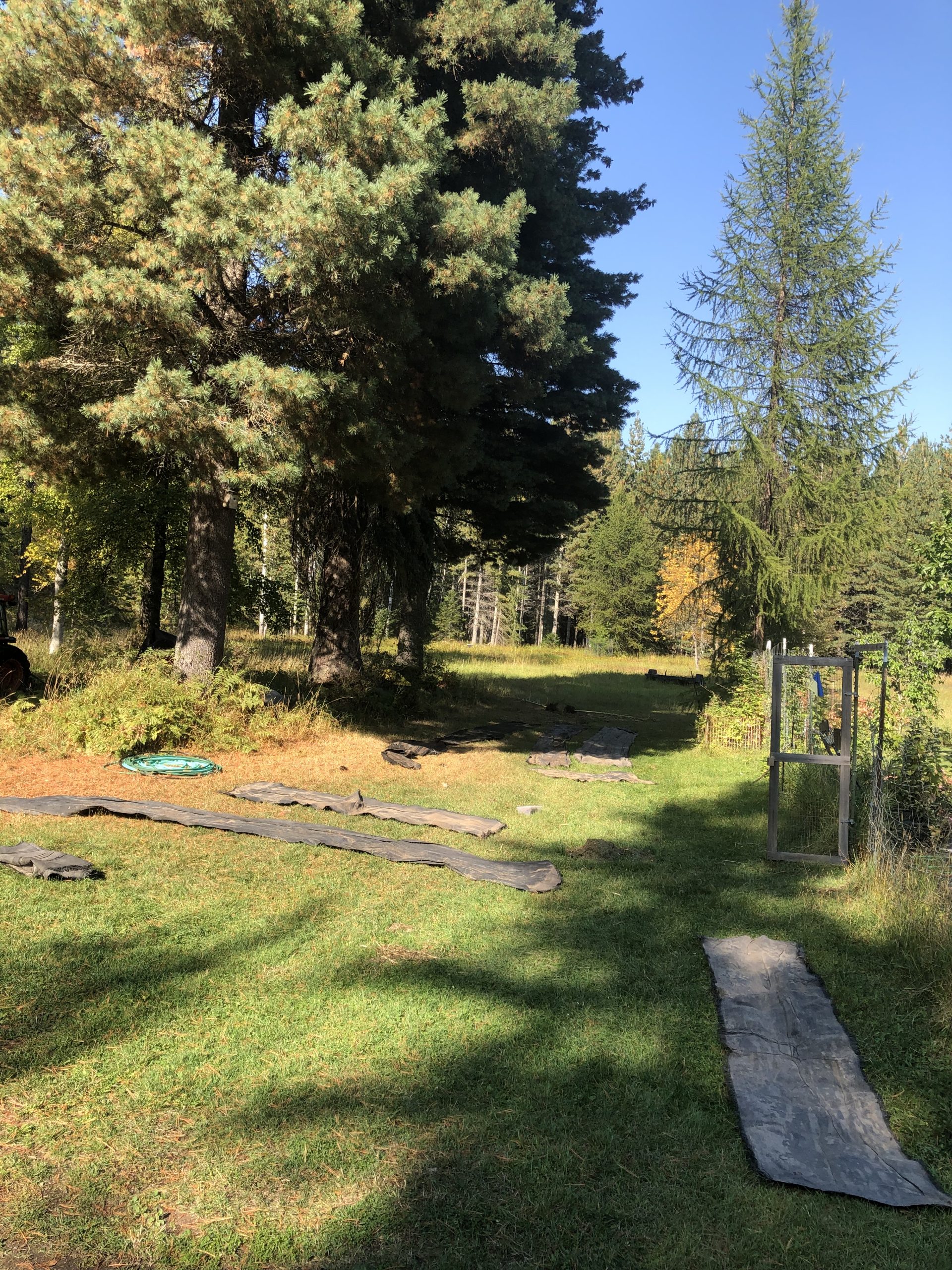

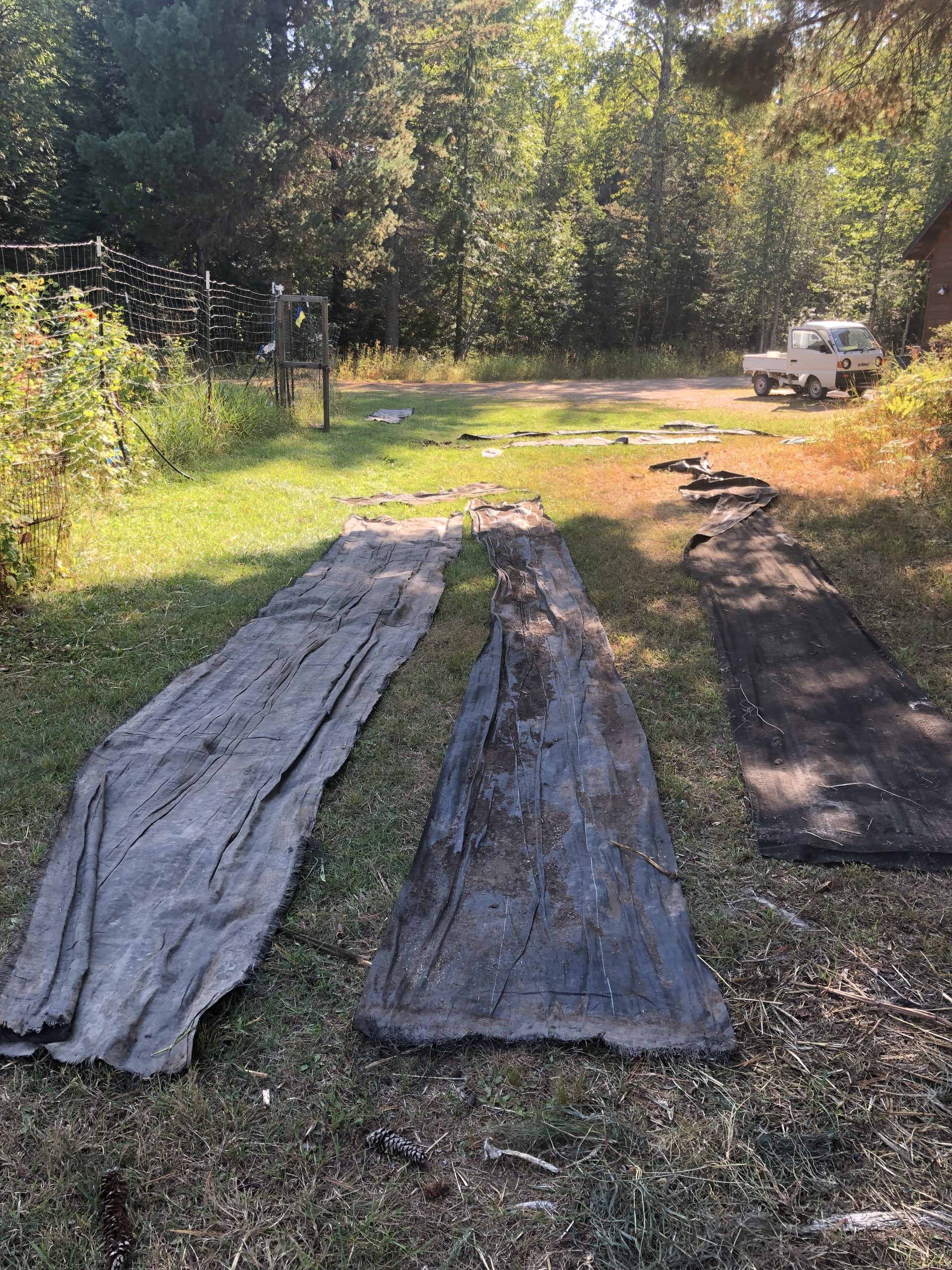
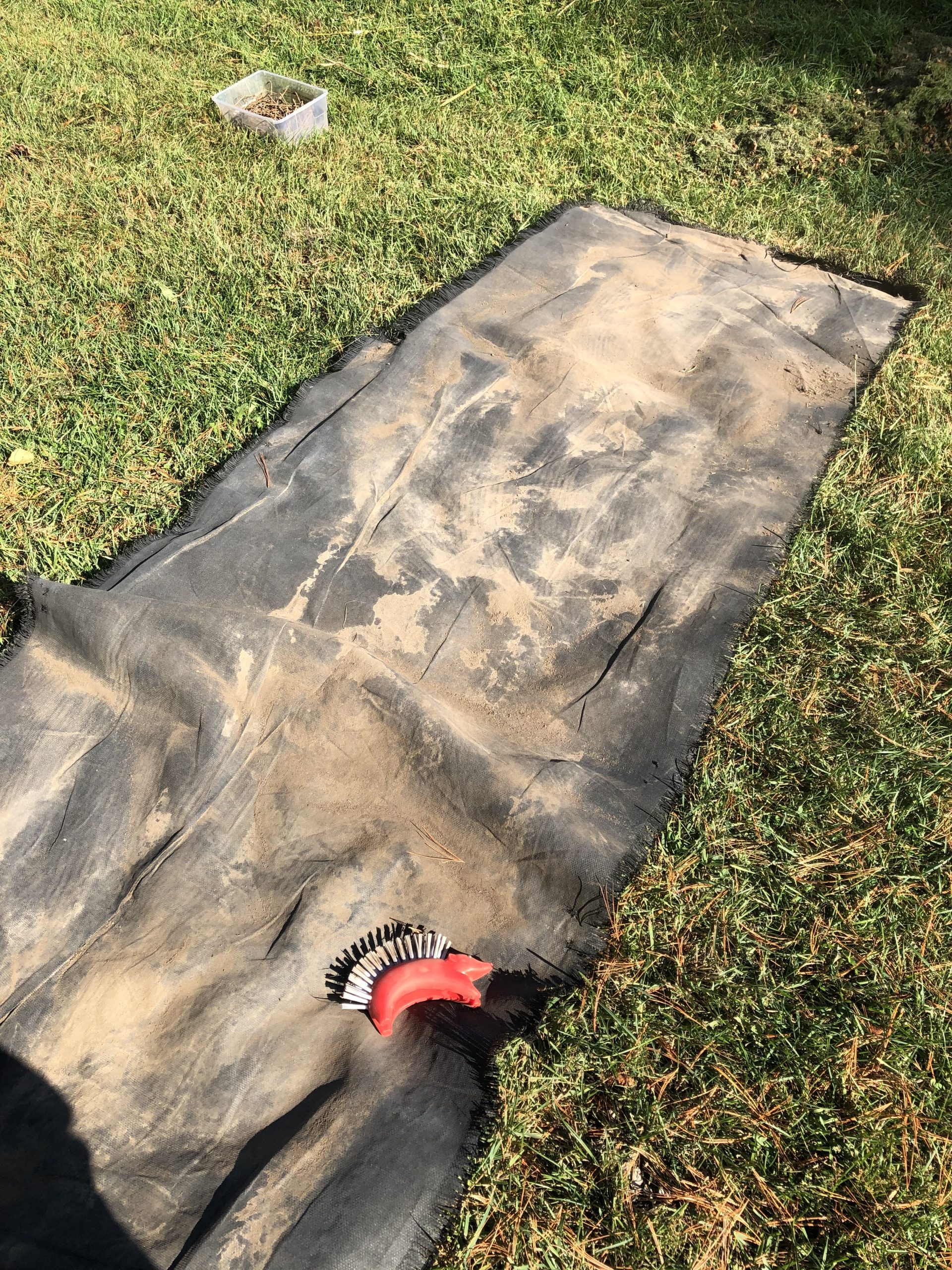
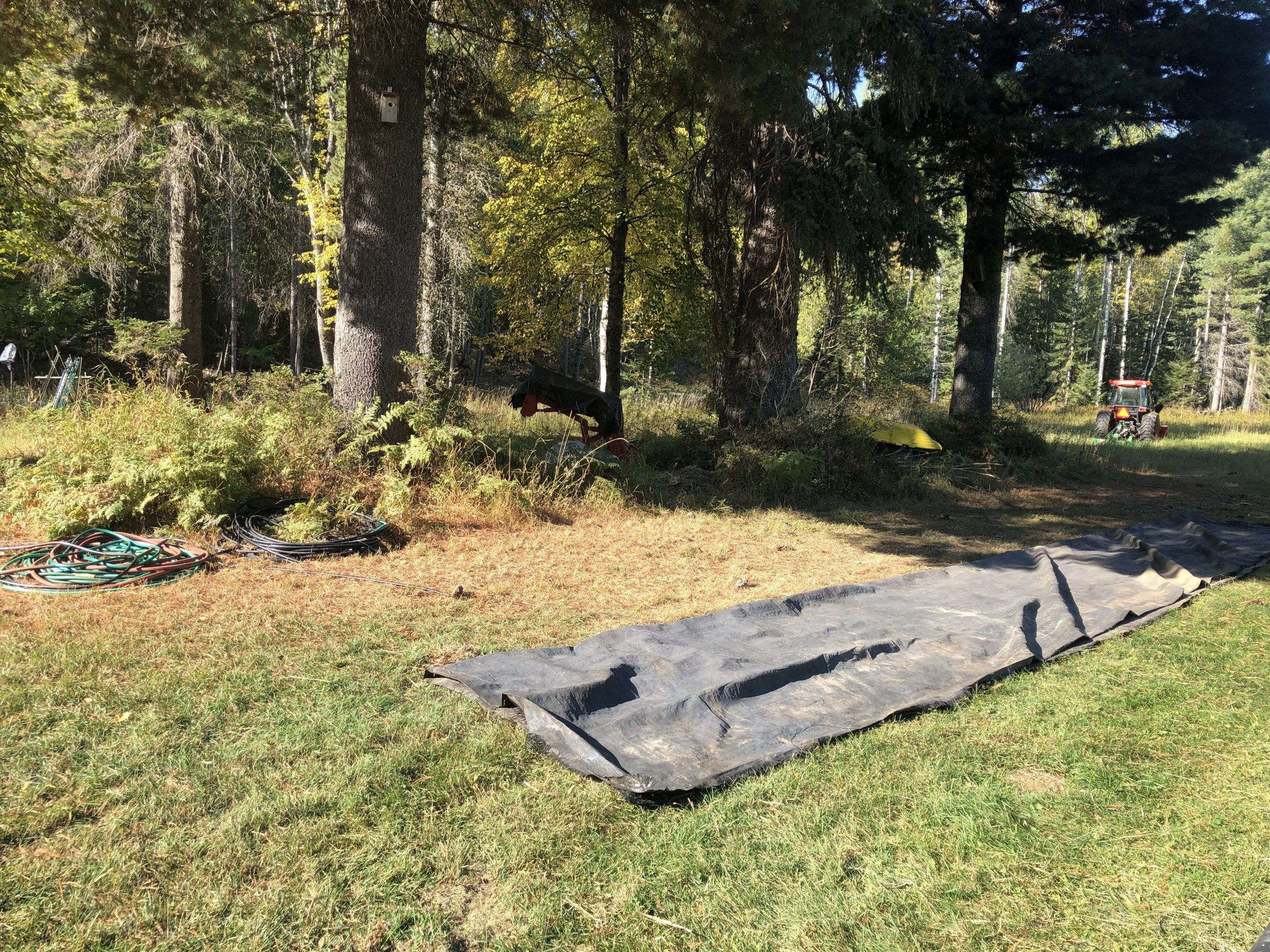
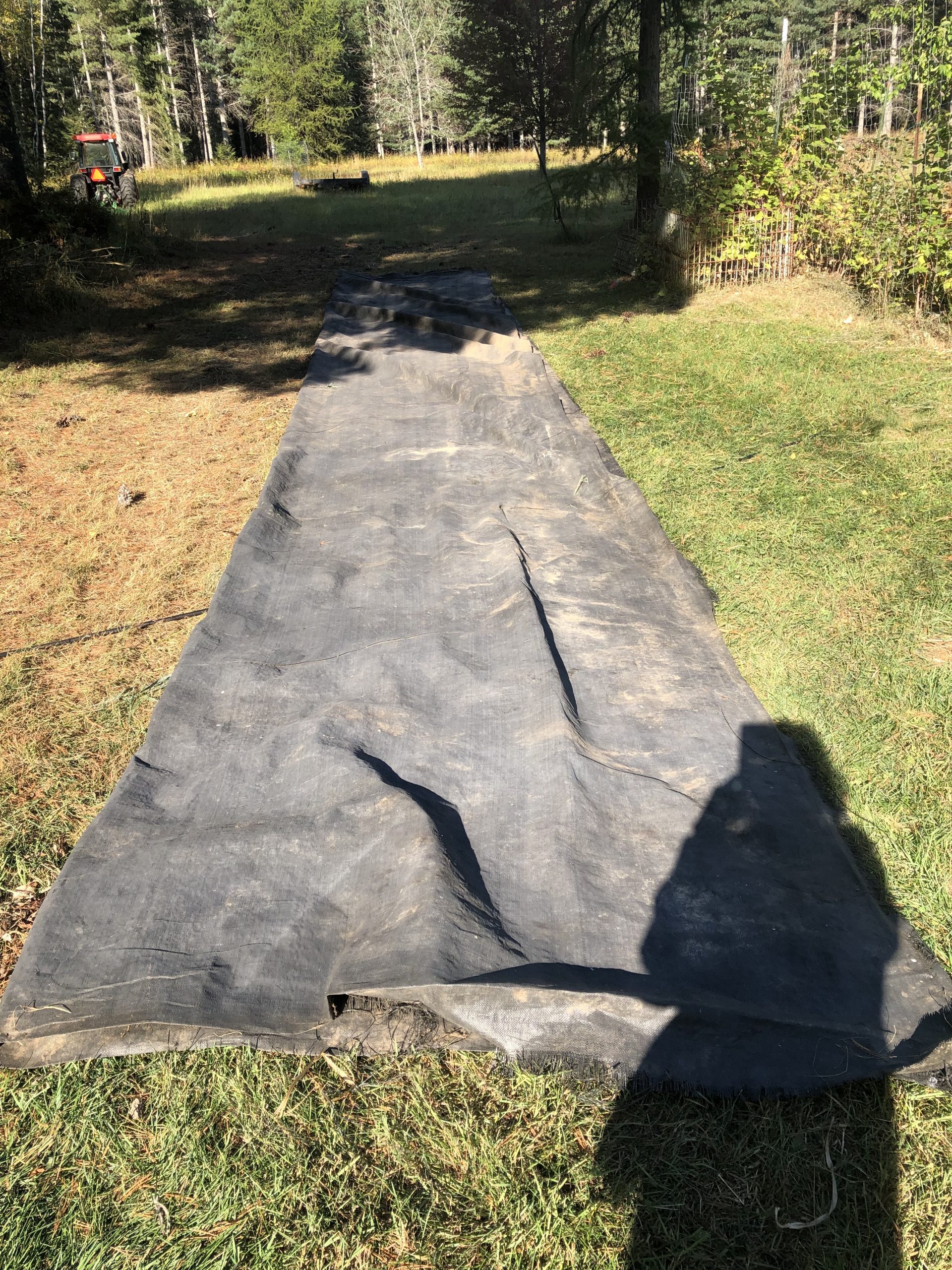
This is where many people tell me I’m crazy and ask me what am I doing and why am I doing it?
Key to Happiness
Even still, you are probably not asking, ‘why is weed fabric so important to your operation?’
Well, I will tell you anyway.
My lower garden is made up of six 50-foot double rows. I grow garlic, onions, tomatoes, cabbage, broccoli, cauliflower, peppers, squash, beans and a few new things every year.
So, when you do the math of what weeding aisles as well as rows would take, well . . . nope.
I do know my limits.
Sort of.
The lower garden also consists of an orchard (six trees but three on deck to plant), a row of raspberries, six mature blueberries, a currant bush, two kiwi vines and two grapes (another one on deck that needs to go in the ground as we speak).
The weeds in the berries are semi-controlled by bark but they still do need some weeding.
Cheap Therapy
And weeding isn’t all bad after all. Everybody needs a certain percentage of it to build good character. And luckily, North Idaho serves up plenty of weeds for you to yank out with relish.
Weeding allows you to say aloud what you should have said when that guy asked that ignorant question that assumed you acted as a sidecar to your husband. Or to work out the kinks of the song you only sing by yourself.
(Which may or may not be “When the Man Comes Around” by Johnny Cash.)
Weeding is like castor oil. No fun at the time but probably good for you.
Know Thine Enemy
Quack or crab grass, hawk’s weed, thistle (which you need gloves for), knapweed, (wear gloves again — it is a carcinogen) and the dreaded tansy (which requires a shovel). The list goes on.
Which reminds me of one of my early favorite works of literature, “Noxious Weeds of North Idaho,” available at the University of Idaho extension office.
For goobers like me, it is excellent bedtime reading material, cover to cover. Fellow cheapskates will also like its price: the spiral bound version was free to me!
If you were born later than 1972 and think printed materials are so gauche, here is a great gallery of pernicious weeds you’ll love to hate:
| No Rest for the Wicked | The Cycle of Weed Eradication is Linked to the Year-Long Double Decker Farm Schedule |
| Around mid-October: | Get the frosted garden tilled under and the new garlic planted (and avoid doing so in the cold rain at all costs). Make plum jam and pear jelly. |
| November: | Collect way too many gourds and pumpkins on the front porch. Realize I won’t have to weed until next April. |
| December & January: | Dream about gardening, sharpen tools, order and organize seeds, marvel that snow and ice will ever change back to warm weather and lush vegetation again. |
| February and March: | Start seeds under lights and start ramping up the excitement. When seeds spring up, wonder at the intense miracle of Nature and never tire of it. |
| April: | Place the weed fabric stored nicely from last year and start planting the early stuff like onion sets. |
| May: | It’s on, and planting begins in earnest. Late this month, I will think about planting the squash but will analyze the weather a lot before doing so. |
| June: | This is the month weeds spring up. And up! And . . . insert screaming emoji here!! Start weeding and do not rest if you know what is good and holy. |
| July: | ‘Hey, how about going down to the garden to weed?’ Good idea! Have faith, because sometime in July, it starts to get really hot and if I have been diligent with weeding, I can mulch and leave that chapter behind for another year. Make currant jelly. |
| August: | Harvest begins, and everything really starts to come to fruition. Make blueberry jam, raspberry jam, raspberry-pepper jam and transparent applesauce. |
| September: | There are lots of vegetables and fruit to eat and all the work starting last year makes me so happy as we eat meal after meal straight from our land. |
| October: | Start again! |
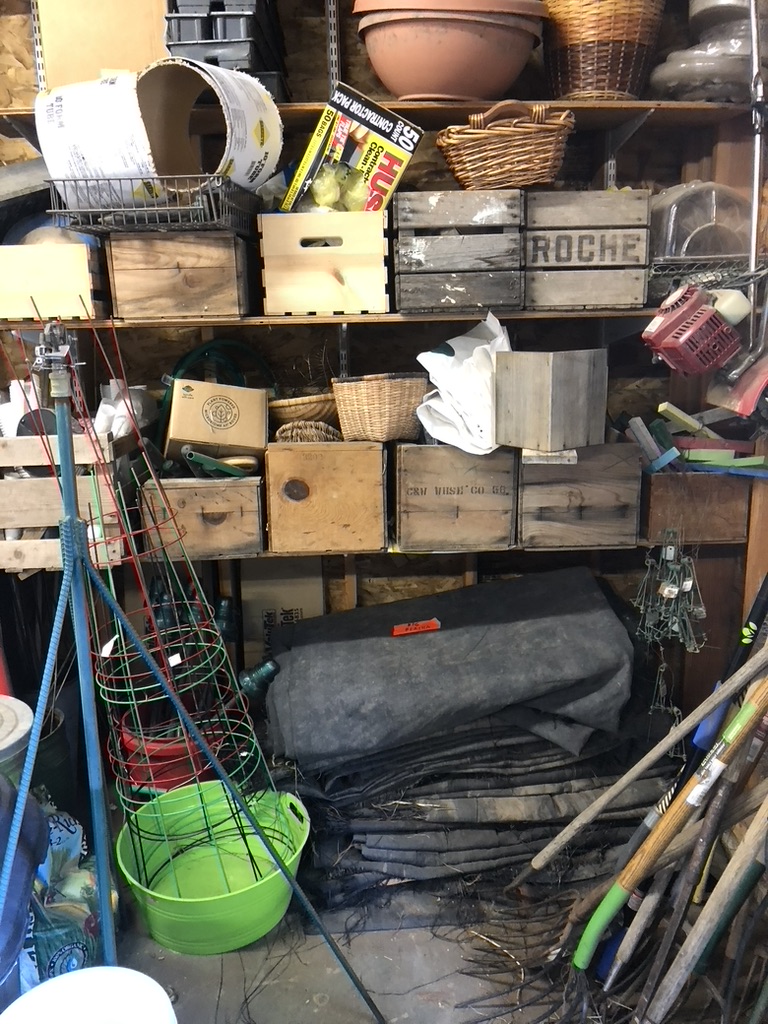
Weed fabric (fairly) neatly stored for use next year. The day this is done is the day I declare, “Victory is mine.”
A Love-Hate Relationship
So, in short, weed fabric allows me to manage all the work my garden requires by myself without outside help. It gives me the tiniest jumpstart against the weeds and lets me stay (kind of) on top of the weeds throughout the growing season.
My rich interior garden fantasy shed includes a mounted roll of weed fabric, at the ready to suppress any wayward weeds that might want to get a foothold.

